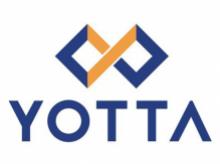Laptops Market Sustaining a Robust CAGR of 4.4%
According to the report, the global laptops market size is estimated to generate $168.6 billion in 2021 and
$257.4 billion by 2031, witnessing a CAGR of 4.4% from 2022 to 2031. The report
offers a detailed analysis of changing market trends, top segments, key
investment pockets, value chain, regional landscape, and competitive scenario.
Rise in internet usage globally, increase in
consumer knowledge about emerging technologies, growth of the information
technology (IT) sector, rise in digital convergence resulting in the high
demand for high-performance laptops across a variety of industries, including
education, automotive, manufacturing, and medicine, rise in trend of
bring-your-own-device (BYOD) among businesses, the increased demand for
multipurpose laptop, and increase in spending power of consumers fuel the
growth of the global laptops market. However, increased adoption of smartphones
and tablets is likely to hinder the global market growth. On the other hand,
rise in demand for laptops in the corporate sectors will present new growth
opportunities for the global laptops market in the coming years.
Covid-19 Scenario
1. The outbreak of the Covid-19 pandemic impacted
the global laptops market positively. The popularity of laptops increased due
to lockdowns imposed by governments worldwide.
2. This forced the global laptops market to
reconsider its production processes, which largely drives industry 4.0 and the
digital transformation across the production lines.
3. There was a downturn in the economy for many
businesses, and many planned projects and expenditures were put to a halt due
to COVID-19 restrictions. However, numerous manufacturers invested in laptops
despite the financial danger during the pandemic to improve corporate
operations with the digitalized workplace.
Based on type, the traditional laptop segment
contributed to the largest share of nearly four-fifths of the global laptops
market in 2021, and is expected to rule the roost during the forecast period.
This is due to its potable size which allows it to be conveniently transported
from one location to another for work, travel, or any other purpose. Moreover,
these laptops are very user-friendly because they start up quickly and run
smoothly. However, the 2-in-1 laptop segment is projected to witness the
fastest CAGR of 6.0% from 2022 to 2031, owing to the extensive adoption of
tablet pc which is also known as 2-in-1 laptop.
Based on design, the notebook segment held the
largest share of two-fifths of the global laptops market in 2021, and is
expected to maintain a prominent growth during the forecast period. The same
segment is expected to exhibit the highest CAGR of 5.2% in 2031. The segment's
growth is owed to the extensive use of notebooks in video recording and editing.
Based on screen size, the 15.0" to 16.9"
inches segment held the largest share of more than one-third of the global
laptops market in 2021, and is expected to maintain a prominent growth during
the forecast period, owing to the high adoption of 15.0" to 16.9"
inches laptops among families for work, school, and entertainment. However, the
11" to 12.9" inches segment is expected to exhibit the highest CAGR
of 5.8% in 2031, owing to the extensive adoption of these laptops since they
offer great performance and productivity, and have different features.
Based on end users, the personal segment held the
largest share of nearly one-third of the global laptops market in 2021, owing
to the need for personal devices by employees and customers. On the other hand,
the gaming segment is expected to exhibit the highest CAGR of 5.9% in 2031,
owing to an increase in professional gamers in developing nations.
Based on region, the market in North America was
the largest in 2021, accounting for nearly one-third of the global laptops
market, due to the adoption of a policy called Bring Your Own Device (BYOD) in
small and large companies in the region. However, the market in Asia-Pacific is
likely to dominate in terms of revenue and show the fastest CAGR of 5.5% during
the forecast period, due to the growing adoption of work-from-home and online
learning in the region.


































Leave A Comment